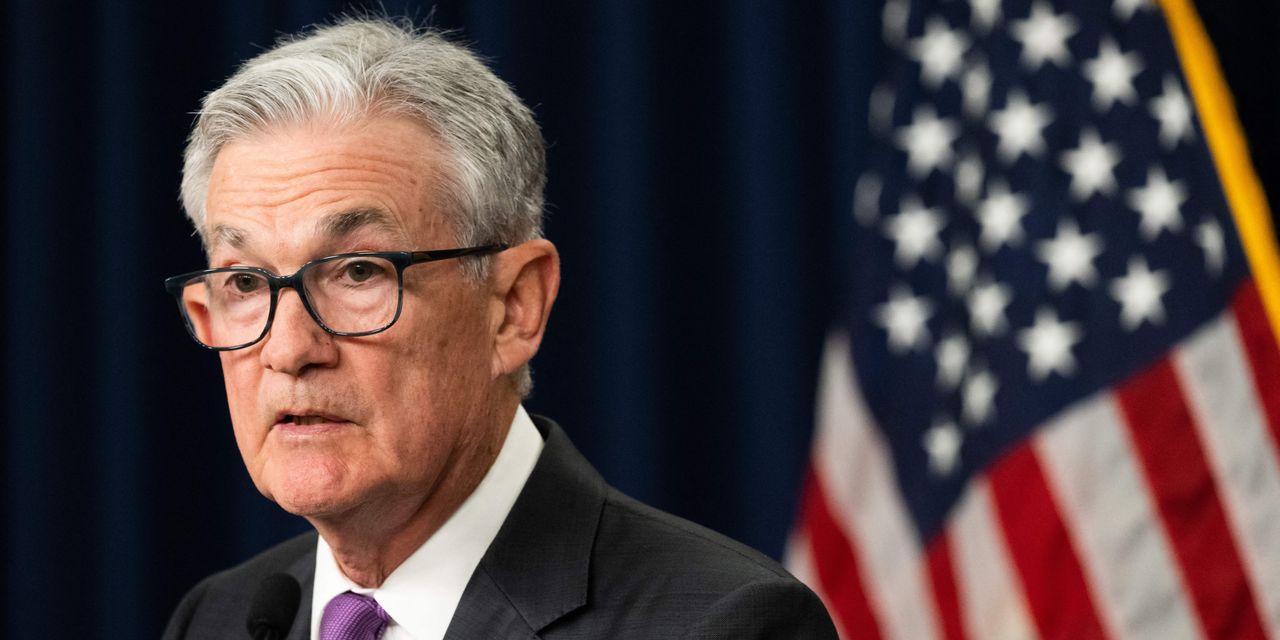At least a couple of members of the Federal Open Market Committee favored keeping the benchmark interest rate steady at a policy-setting meeting last month, even though most officials saw a continued “significant” risk from inflation, according to minutes released Wednesday.
During the meeting in July, Fed officials opted to raise rates a quarter of a percentage point. The decision, which was widely anticipated, left the fed-funds rate at a range of 5.25% to 5.5%, the highest in 22 years.
The vote to raise rates was unanimous, but at least two members felt raising rates may have been premature. “A couple of participants indicated that they favored leaving the target range for the federal funds rate unchanged or that they could have supported such a proposal,” the minutes said. Members in favor of keeping rates steady noted that it would likely result in further progress toward bringing inflation down to the 2% target while allowing Fed officials time to further evaluate the effects of the previous increases.
The division among the committee members was mild, however, with “almost all participants” in favor of raising rates. “Participants noted that this action would put the stance of monetary policy further into restrictive territory, consistent with reducing demand–supply imbalances in the economy and helping to restore price stability,” the minutes said.
Typically released several weeks after each FOMC meeting, the minutes revealed that members are still grappling with an unusual level of uncertainty regarding the economic outlook. Most committee members continue to see “significant upside risks to inflation” that could require additional interest-rate hikes, the minutes showed..
And some participants were concerned that the economy could weaken and the jobless rate could rise, according to the minutes. The economic effects of the tightening in financial conditions since the beginning of last year could be more substantial than anticipated, the officials noted.
But there was some indication that the Fed also sees positive signs within the economic outlook. Fed officials did acknowledge that U.S. economic activity was expanding at a “moderate” pace, and the bank’s staff is no longer forecasting a mild recession at the end of the year, thanks to spending and real economic activity coming in stronger than anticipated.
When it comes to future decisions around rate hikes, pauses, and even eventual cuts, Fed officials will be relying heavily on incoming data, according to the minutes. That was a point Chair Jerome Powell reiterated throughout his July press briefing.
“We’re looking for supply and demand through the economy coming into better balance, including in particular in the labor market. We’ll be looking at inflation and we’ll be asking ourselves, does this whole collection of data—do we assess it as suggesting that we need to raise rates further? And if we make that conclusion, then we will go ahead and raise rates. So that’s how we’re thinking about the next meeting,” Powell said during the July press conference.
From Powell’s perspective, those “pieces of the puzzle” are starting to come together, but he noted that policy hasn’t been restrictive enough for long enough to have its full desired effects. “We intend, again, to keep policy restrictive until we’re confident that inflation is coming down sustainably toward our 2% target and we’re prepared to further tighten if that is appropriate,” he said in July. Wednesday’s minutes did nothing to alter that stance.
Yet despite the hawkish tone of the minutes, Wall Street continues to bet that the central bank has raised rates as high as it is going to this economic cycle. In June, Fed officials signaled that two additional quarter-point rate increases would be necessary this year. Officials raised rates in July, but there is potentially another quarter-point increase still in the mix.
Still, after the release of the minutes, the likelihood that the Fed keeps the benchmark rate steady in September was at 88.5%, according to the CME FedWatch Tool, which tracks moves in interest-rate futures.
There’s “something for everyone” in Wednesday’s minutes, with lots of “on the one hand, and on the other,” wrote Mohamed A. El-Erian, chief economic advisor at
Allianz.
He noted that the mixed views about economic prospects and the split on how much more policy tightening is still needed will serve to heighten the focus on the Jackson Hole conference next week.
“The minutes tee up Chair Powell for Jackson Hole next week where we expect him to continue to stress that the Fed will be data dependent and consider the ‘totality’ of the data, keeping September a live meeting,” noted
Morgan Stanley’s
chief U.S. economist Ellen Zentner and her team.
Write to Megan Leonhardt at [email protected]
Read the full article here


